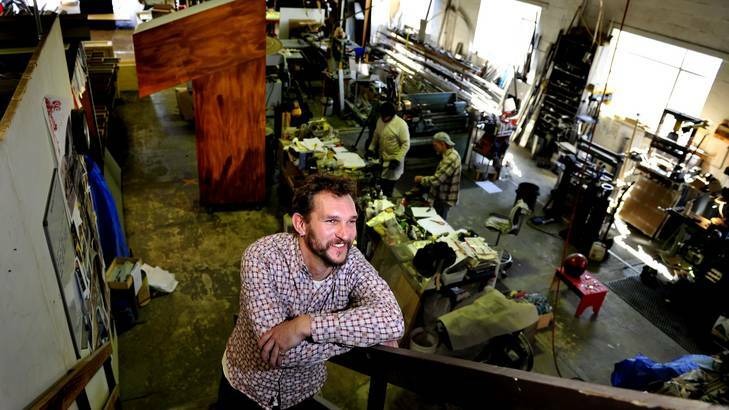Tucked away in Queanbeyan, a workshop full of creative types is giving birth to the art and exhibitions of Australia's cities.
Subscribe now for unlimited access.
or signup to continue reading
Thylacine co-founder Caolan Mitchell, a sculptor by profession, came to Canberra in 1999 to work on the refurbishment of the Australian War Memorial, where he was involved in building the World War II gallery.

He said with the range of museums and cultural institutions in the capital, a Canberra arts and design practice made sense.
''It's taken me in all sorts of different directions and a wide variety of creative projects,'' he said.
Thylacine is responsible for the coloured steel tubes that emerge from Lake Ginninderra, moving with the wind and lighting up at night.
Mr Mitchell said that project began with the team thinking about how it could use water in art.
''One of the things that was most challenging about them was the components that aren't seen, they sit on giant springs under the water … that we actually based the mechanism on that children's playground equipment, those rockers,'' he said.
Thylacine also created the light-up coloured boxes that overhang Childers Street in Civic reading and reacting to sound tone, and it designed the blue screen on the Kent Street Bridge over Adelaide Avenue, along with other public artworks in New South Wales, Victoria, South Australia and Queensland.
Mr Mitchell said the bridge screen was challenging because of all the safety concerns that needed to be taken into account, including guidelines on height, impact and potential glare. But he said it was rewarding to see design integrated into that kind of project.
The lines on the bridge screen are a topographical map of the area.
Thylacine has just been awarded the Canberra … In So Many Words project as part of the centenary celebrations next year. This will involve making large-scale word sculptures around Lake Burley Griffin, along with smaller aspects with community involvement.
A team of 16 Thylacine artists, architects, interior designers, jewellers, cabinet makers and sculptors, in Queanbeyan and Melbourne collaborate on the art.
''Someone will develop a concept of how to make something, or an idea, and come out into the workshop, and we might make prototypes and test that - and there's this constant dialogue between making and designing,'' Mr Mitchell said.

